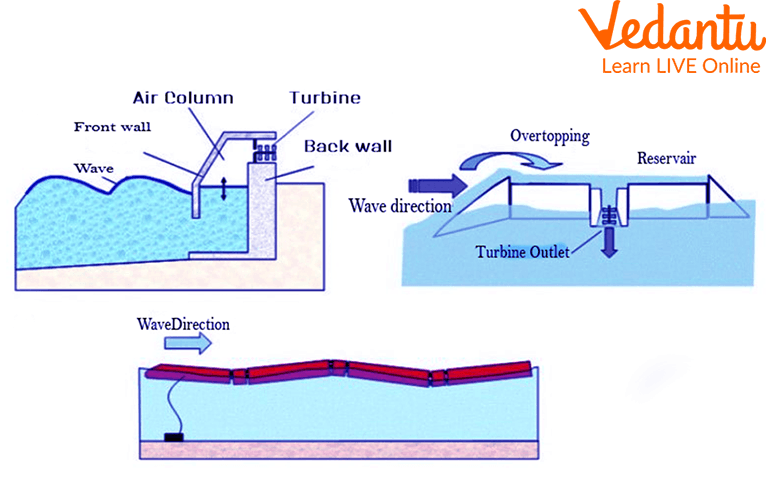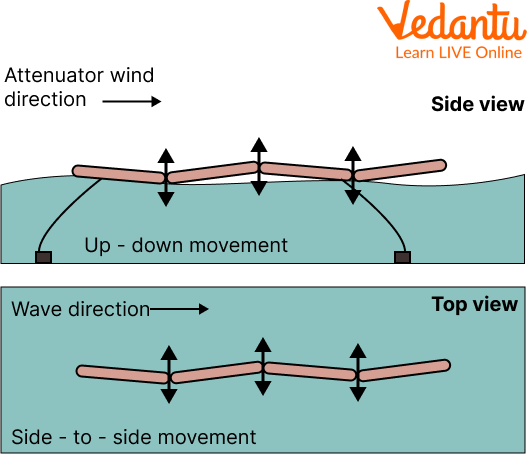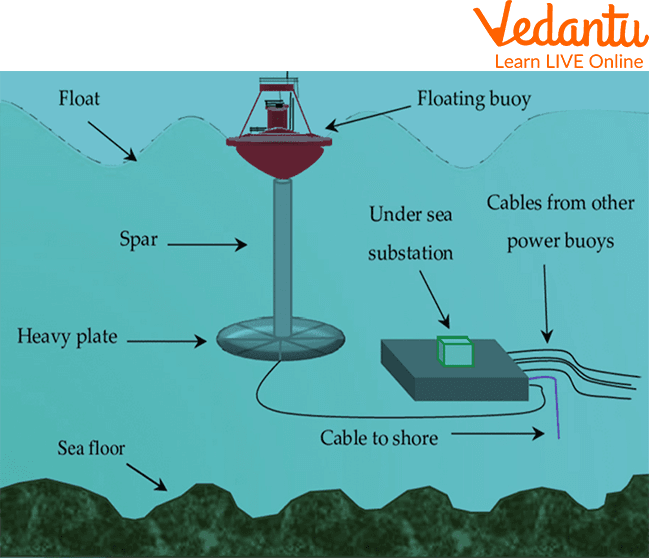




Overview of Wave Energy
Energy is the capability of doing work. The world’s energy demands are increasing every day. As our population grows, so does our need for energy. Wave energy is an untapped resource that could help meet our energy needs. Wave energy is the energy that is produced by the movement of waves. Waves are created by the wind blowing over the surface of the water. The energy in waves can be harnessed to generate electricity. Wave energy is a clean source of energy. It does not produce greenhouse gases or other pollutants. In this article, we will be discussing Wave Energy, its Benefits, its advantages and its disadvantages.

Using Waves to Create Energy
Wave Energy as a Clean Source
So what is wave energy? Wave energy is a type of renewable energy that captures the motion of waves to produce electricity. With more than enough waves in just one ocean, wave energy could power the entire world. Wave energy can be captured by any object that moves as a result of wave action and has the potential to be converted into an electric current.
What are the Benefits of Wave Energy?
Wave energy has enormous potential because a single wave has enormous energy. After all, it is so densely packed. If we are successful in utilising wave energy, we may be able to meet over 40% of the world's energy requirements. In contrast to wind or solar energy, wave energy is relatively consistent and doesn't require any land. Wave and tidal energy are good sources because it is a clean, sustainable energy source i.e. they can be continued to generate energy for a long time.

Wave
How Does Wave Energy Work?
There are numerous ways to utilize wave energy, but the method chosen is typically determined by the state and composition of the body of water where the wave energy is being sourced. There are many wave energy generators like Surface-Following Attenuators (Line Absorbers) which are located parallel to the wave and the pressure exerted by the wave helps in generating the energy, and Buoyancy Unit/Point Absorbers which are the structures which float and absorb energy. These are the main types of wave power harvesting now in use, even though numerous other techniques have also been developed.

Wave Energy Attenuators
So, what is tidal energy used for? Tidal energy is the energy generated by the rise and fall of the tides in oceans. Tidal energy may be used to power our homes and places of business. In some locations, tidal energy can be used in place of burning fossil fuels like coal and oil.

Working of a Point Absorber
Wave Energy Facts
Let’s learn some wave energy facts:-
Since waves in the ocean are only created when air currents collide with the water, wave energy can be thought of as one type of wind energy. And as a result of the Sun's radiation warming the atmosphere, the wind is created.
The first wave energy patent was issued in France in 1799 by Girard and his sons. This can be considered the history of wave and tidal energy.
Two distinct waves can be used to collect marine energy. One comes from the ocean's surface using the kinetic energy of the waves, and the other comes from deep inside the water due to pressure.
Globally, some oceans like the pacific ocean are better suited than others for the development of wave energy.
These were some of the fun facts about waves and tidal energy.
Advantages of Wave Energy
Zero Emissions
Like fossil fuels, wave energy does not naturally produce greenhouse gases when it is produced. Wave power is harnessed by turbines to produce electricity, making them an entirely clean and sustainable energy source.
Renewable
Wave power is renewable, much like all other alternative energy sources. Wind produces waves. Waves develop when heat energy is transferred by the wind from one region of the earth to another. Since wind will always exist, waves at the water's surface will always be able to produce power, making this source renewable.
Disadvantages of Wave Energy
Environmental Effects
There is no way to quantify the environmental effects of large-scale power stations on the shore. It might be difficult to construct energy plants directly on the beach since they could harm the marine life and ecosystems nearby. Fishing grounds nearby may be impacted, or the plants may face some harm as well. The true environmental effects that wave energy plants may have, however, require further study.
High Costs
The cost of construction for wave energy systems might be as low as 07.5 cents per kWh, however, this would depend on the location and ongoing maintenance expenses. Although wave power is still in the research stage of development and is typically funded by government grants or research grants, the costs are currently typically very high.
Summary
Utilising the inherently occurring forces of water throughout the ocean, wave energy generates electricity. There are enormous energy resources on earth, we just have to find the correct way to use them. Through this article, we can learn about what is wave energy and the various ways to harness wave energy sustainably. There are various methods which are discussed above, which can be used to generate energy from waves. The simplest way to understand it is the water's force causes the turbines to spin, producing power. This is how water is used to generate energy. With this, we have come to an end of our article, in case of any other doubts feel free to ask in the comments.
FAQs on Facts About Wave Energy
1. Where is wave energy the greatest?
On the eastern coastlines of the world's oceans, the latitudes with the strongest winds (latitudes 40°–60° N and S) are where wave energy development has the most potential (which border the western edges of the continents).
2. Where is the world’s first operational wave power generator located?
Off the coast of Aguçadora, Portugal, the world's first operational wave power generator generates up to 2.25 megawatts of power using three enormous jointed tubes that float on the surface of the Atlantic Ocean.
3. How is wave energy produced?
Floating turbine platforms or buoys that rise and fall with the waves are commonly used to generate wave power. Wave power can, however, be produced by taking advantage of variations in air pressure that take place in wave capture chambers that face the sea or variations in wave pressure on the ocean floor.









